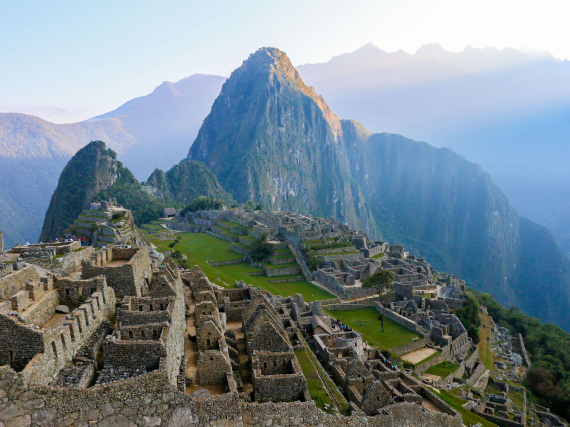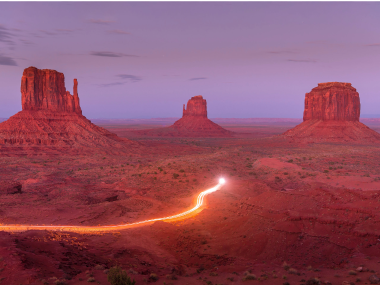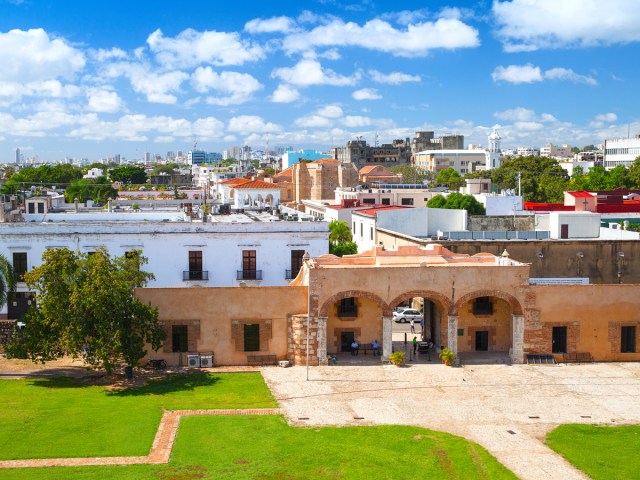When planning a getaway, many travelers set their sights on sunny locales, and for good reason. Direct sunlight is scientifically proven to reduce stress and lift moods, and as a bonus, you may even walk away with a nice tan. (But don’t forget to wear sunscreen!) If you’re seeking sunlight, you don’t have to schlep all the way to the Mediterranean — there are plenty of cloudless skies in the U.S. Here are the 10 sunniest states based on their annual solar irradiance, a measure of how much sunlight is shining on a given area, according to the most recently available data compiled by the National Environmental Public Health Tracking Network.
10. Virginia
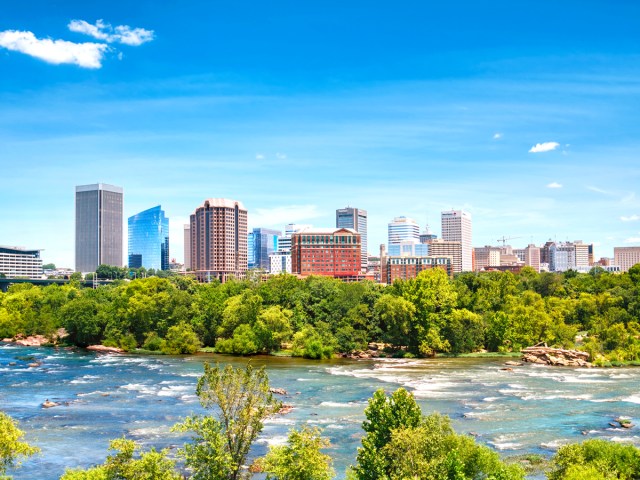
Kicking off the list of top 10 sunniest states is Virginia, which is not just for lovers, as per their famous ad slogan, but for sunbathers as well. The sun tends to be more intense in eastern Virginia along the Atlantic coast and the Chesapeake Bay, while the Appalachians in the west are usually cloudier.
Many Virginia cities — such as Lynchburg, Norfolk, Roanoke, and the capital of Richmond — experience more than 200 sunny days annually, placing them above the national average. The state has also started taking advantage of its frequently sunny skies when it comes to renewable energy — Virginia ranked ninth in the nation for solar production in 2023.
9. Nevada
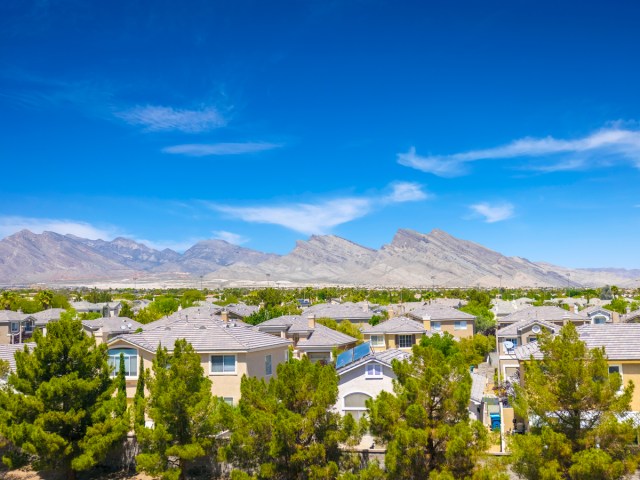
With annual statewide precipitation at just 10.3 inches, you’ll rarely find storm clouds in Nevada, which is considered the driest state in the country. The state’s climate is characterized by its blistering sunlight almost year-round. The temperature from the sun’s rays rarely dips below triple digits in the dead of summer, and temperatures still hover around the 50s during wintertime.
Sunlight is particularly prominent in the southern part of Nevada, near Las Vegas, which receives 3,817 annual hours of sunshine on average. While you’ll find slightly more precipitation in northern Nevada, the sun continues to shine bright up north, with the percentage of maximum annual possible sunshine hovering between 65% and 75% in cities like Elko and Winnemucca.
8. Oklahoma
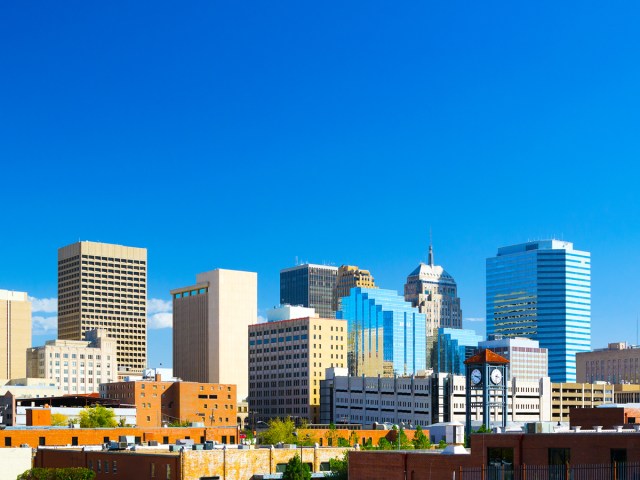
The Sooner State is the eighth-sunniest state in America. Peak sunlight in Oklahoma comes in July and August, where it’s sunny as much as 79% of the time in Oklahoma City and 74% of the time in Tulsa. Even in winter, Oklahoma gets less than 10 inches of annual snow, so you’re far more likely to experience sunlight than storm clouds on those brisk days.
7. North Carolina

North Carolina is known for unpredictable weather systems, but even with threats of rain and snow, the Tar Heel State ranks as the seventh-sunniest in the U.S. In fact, five cities in North Carolina are among the top 100 sunniest cities in the country: Wilmington, Charlotte, Cape Hatteras, Greensboro/Winston-Salem, and Asheville each experience between 59% and 63% of average possible sunshine annually.
6. Arkansas
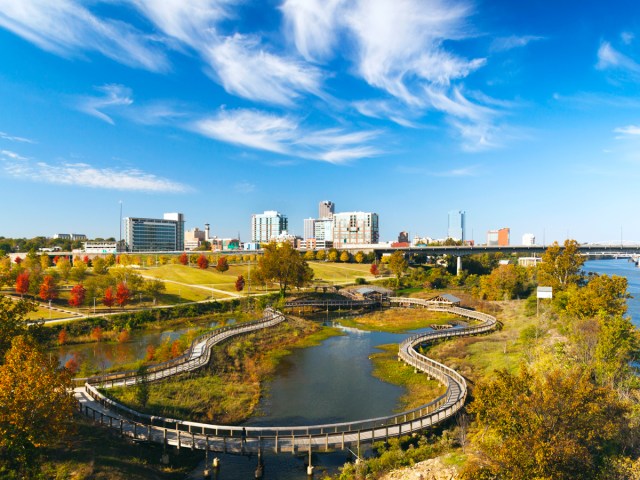
The Natural State has a humid, subtropical climate, with four distinct seasons throughout the year. Statewide sunshine reaches peak levels in June, when Arkansans enjoy a daily average of around 11 hours of sunlight. The capital, Little Rock, receives around 219 days of sun each year. Sunlight levels (and temperatures) are highest in the West Gulf Coastal Plain, which encompasses parts of southeastern and south-central Arkansas along the Louisiana border.
5. Colorado
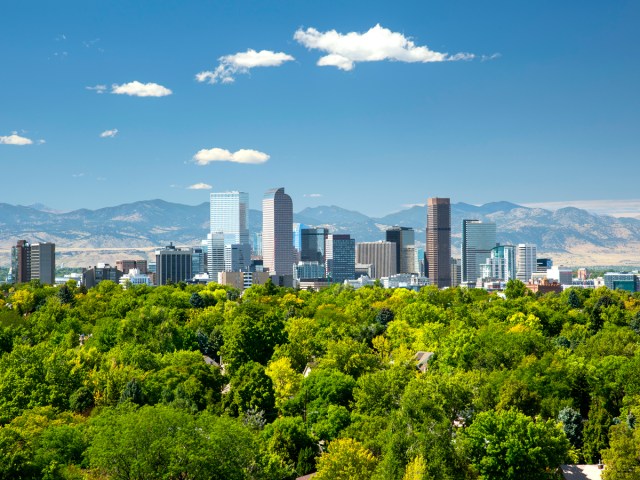
There’s a common myth that claims Colorado gets 300 days of sunshine a year. Unfortunately, it’s an exaggeration concocted by a publicist for a Colorado railroad in the 1870s, but the true numbers aren’t too far off. Indeed, the Centennial State still gets enough sun to be ranked the fifth-sunniest state in America.
Colorado’s high elevation and thin mountain air lead to less cloud cover and plenty of direct sunlight. Cities such as Denver, Colorado Springs, and Grand Junction each boast over 240 days of sunshine a year. One of the major downsides is that UV rays become about 2% more powerful for each 1,000-foot increase in elevation, which means that sunshine is particularly potent in places like Leadville, a Colorado city located more than 10,000 feet above sea level.
4. California
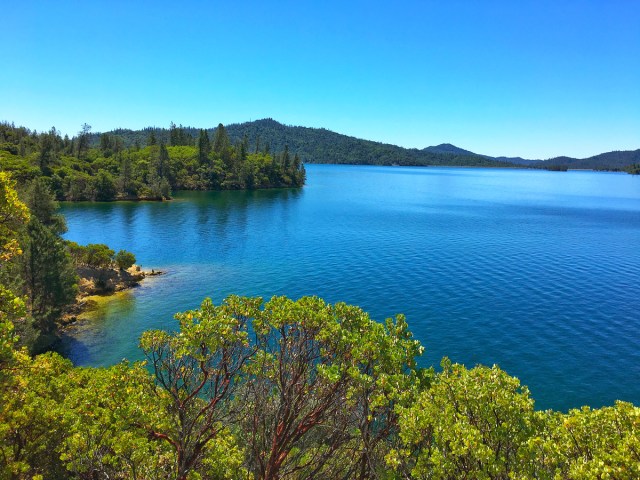
California is the third-largest state, so it has a variety of climates. No matter where you’re located, however, sunlight is bound to be nearby. One of California’s sunniest cities is Redding, located in the northern part of the state, adjacent to the Shasta-Trinity National Forest. The city experiences a whopping 97% possible sunshine on average during the months of July and August. The same holds true for the central Californian city of Fresno and California’s capital. Interestingly, Sacramento totals an average of 3,602 hours of annual sunshine — over 1,000 hours more than famously sunstruck regions around the world such as Barcelona, Spain, and Melbourne, Australia.
3. Arizona

Part of the reason Arizona is so sunny is due to the rain shadow effect caused by the mountains in neighboring California. This prevents moisture from reaching the region, which results in less rain and fewer clouds — making Arizona the third-sunniest state in the nation.
Arizona is actually home to the single sunniest city in not only the United States, but also the world. Yuma, located in southwest Arizona near the Mexican border, receives 91% of the maximum possible sunshine annually. The state capital, Phoenix, is also known for its bright sun, and Tucson boasts 350-plus days of sunshine per year.
2. New Mexico

New Mexico’s penchant for bright skies is exemplified by the state flag, which features a red sun symbol that is considered sacred to the Zia peoples who are Indigenous to the state. New Mexico’s climate is characterized by arid and semiarid regions that feature limited precipitation and low relative humidity, leading to clear skies and fewer storms.
According to New Mexico State University, the state receives 75% to 80% of the maximum amount of possible sunshine annually, with portions in the southwestern part of the state experiencing over 10 hours of daily unobstructed sunlight.
1. Hawaii
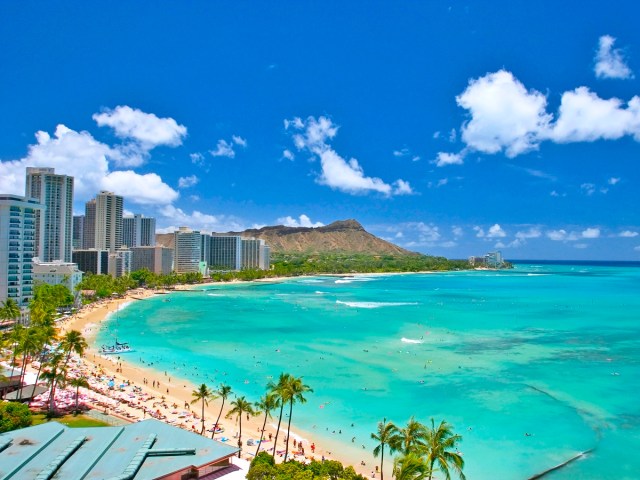
Not only is Hawaii an island paradise, but it’s also the sunniest state in the U.S. Thanks to the tropical climate in the Aloha State, this is true no matter the season. The average daytime temperature in the Hawaiian islands sits around 85 degrees Fahrenheit in summertime and 78 degrees Fahrenheit in winter.
Of course, Hawaii is still susceptible to storms, cloudy weather, and climatic variations, especially when there’s volcanic activity. You may even experience volcanic fog — referred to locally as “vog” — permeating the air, limiting the amount of direct sunlight in certain regions.
But even if there are clouds in the sky in one area of the state, sunlight is likely just a few miles away. The Big Island tends to get less sunshine than islands such as Oahu, where the city of Honolulu experiences 271 days of annual sunshine. Kahului, located on the island of Maui, gets even more sunshine, with 276 days each year on average.
More from our network
Daily Passport is part of Inbox Studio, which publishes content that uplifts, informs, and inspires.

